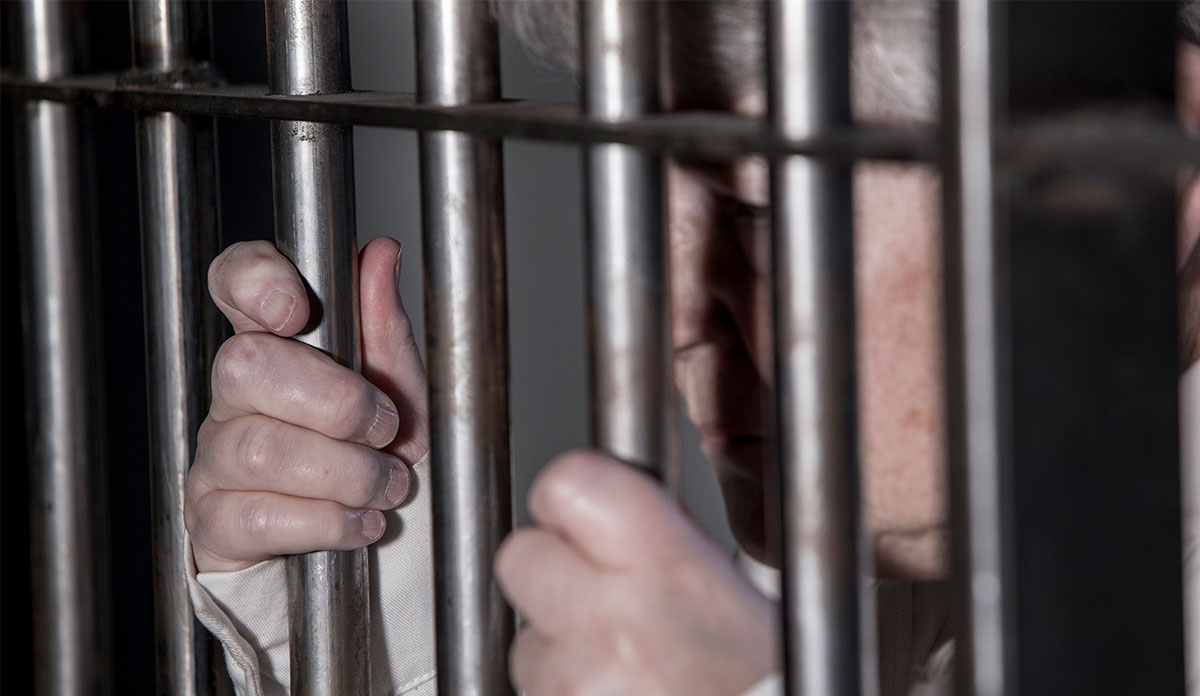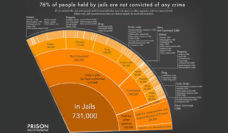Two cold metal bunk beds dominate an unimposing beige wall. An older man, dressed in all white, sits on the bottom bunk, his arms draped over the handles of a walker. In the background, barbed wire curls atop endless fences. The photo is one of 19 in a series highlighting aging prisoners. The man, ”Tex” Johnson, was arrested for stealing $24 in Birmingham, Alabama. The 1959 crime resulted in a 50-year sentence. In the photo, he is 67.
Long sentences like Tex’s are the main contributor to the aging prison population. Between 1993 and 2013, the number of prisoners above the age of 55 with a sentence of more than one year increased by 400%. In 2013, older prisoners totaled 10% of the U.S. prison population.
Older people face increased challenges at all stages of the carceral process from arrest, trial, release, and reintegration. Prison reports and researchers use the term “older” broadly, often referring to anyone over age 45. Many prisoners enter the carceral system with pre-existing health conditions. Once in prison, they often experience accelerated aging, developing early-onset chronic physical conditions and mental illness. Geriatric syndromes, conditions associated with aging like hearing loss and falls, have a large impact on quality of life, healthcare use, and morbidity. Older prisoners cost three times more than younger prisoners due to high health care costs.
Helen Codd found that the physical design of prisons and barriers to accessing medical care create additional challenges for geriatric prisoners. Reduced mobility, in particular, restricts the ability of older prisoners to access resources and basic needs including dining services, education, sleeping arrangements, and recreation. Handrails and ramps are easy, low-cost fixes to some of these barriers. As more prisoners die in incarceration, palliative care needs to prioritized. Hospice programs in prisons are not common and little is known about the use of analgesics to relieve suffering in this population.
The wider carceral system affects elderly family members and support systems. The rural locations of many penitentiaries have limited transportation options especially for elderly parents to access visitation rights. Codd notes that prisons are also often left out of age-friendly city planning, again affecting prisoner visits.
Once released, older former prisoners are least likely to be re-incarcerated, and yet face increased social challenges such as homelessness, unemployment, and hospitalization compared to younger ex-prisoners.
There are multiple approaches to handling an aging prison population. Criminal justice reform can reduce the length of sentences and support early release programs. The start of the Covid-19 pandemic increased calls for the early release of older prisoners. Many states started early release programs, however, most petitions for early release were denied. Many prisoners who should have been released were not due to wrongly predicted risk of recidivism or the severity of their original crime.
Geriatric prisoners are a largely invisible population that has been left out of research, policy, and public health interventions. The stall in updated policies means that people like Tex have to fight for basic needs such as health care and the prized real estate of a bottom bunk.
Photo via Getty Images














